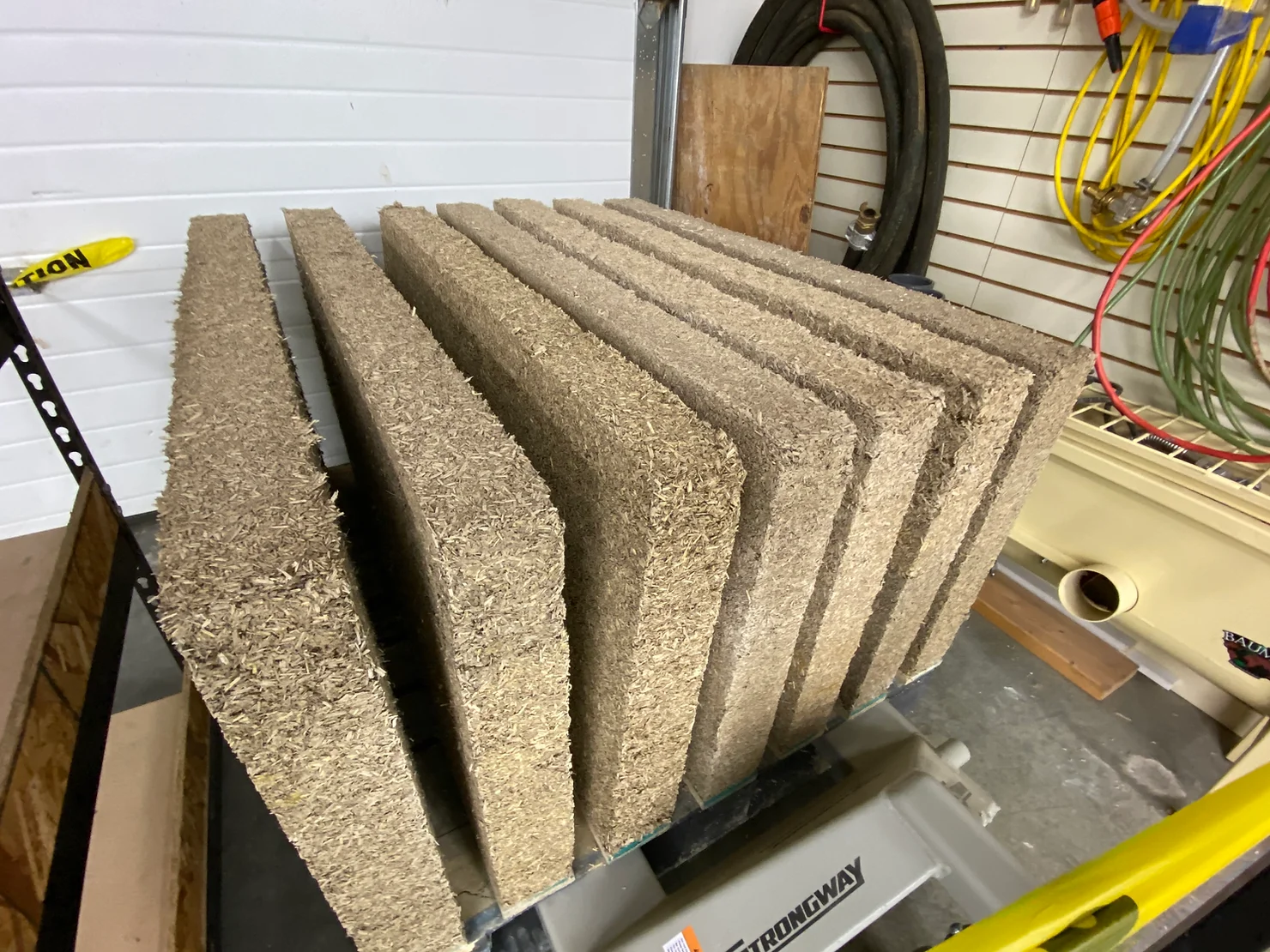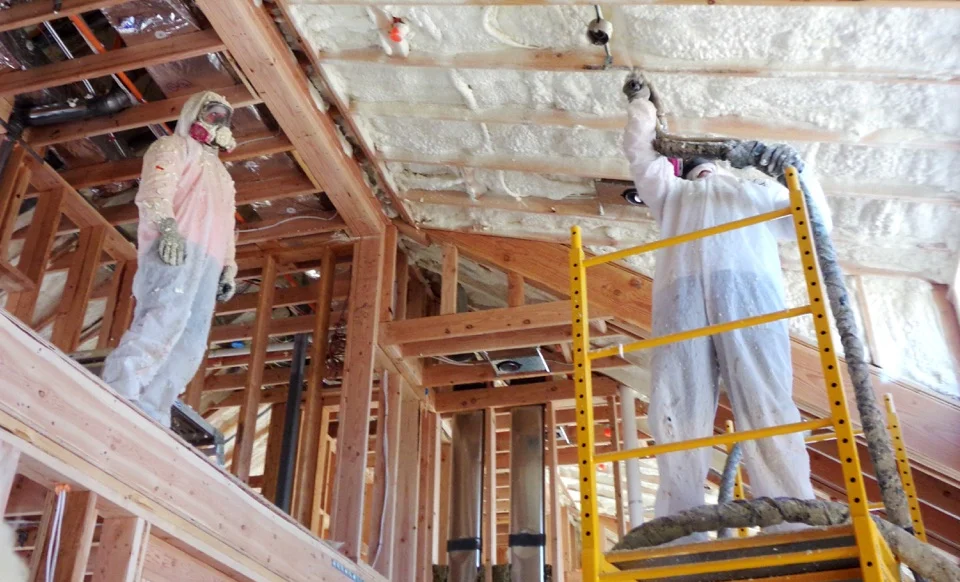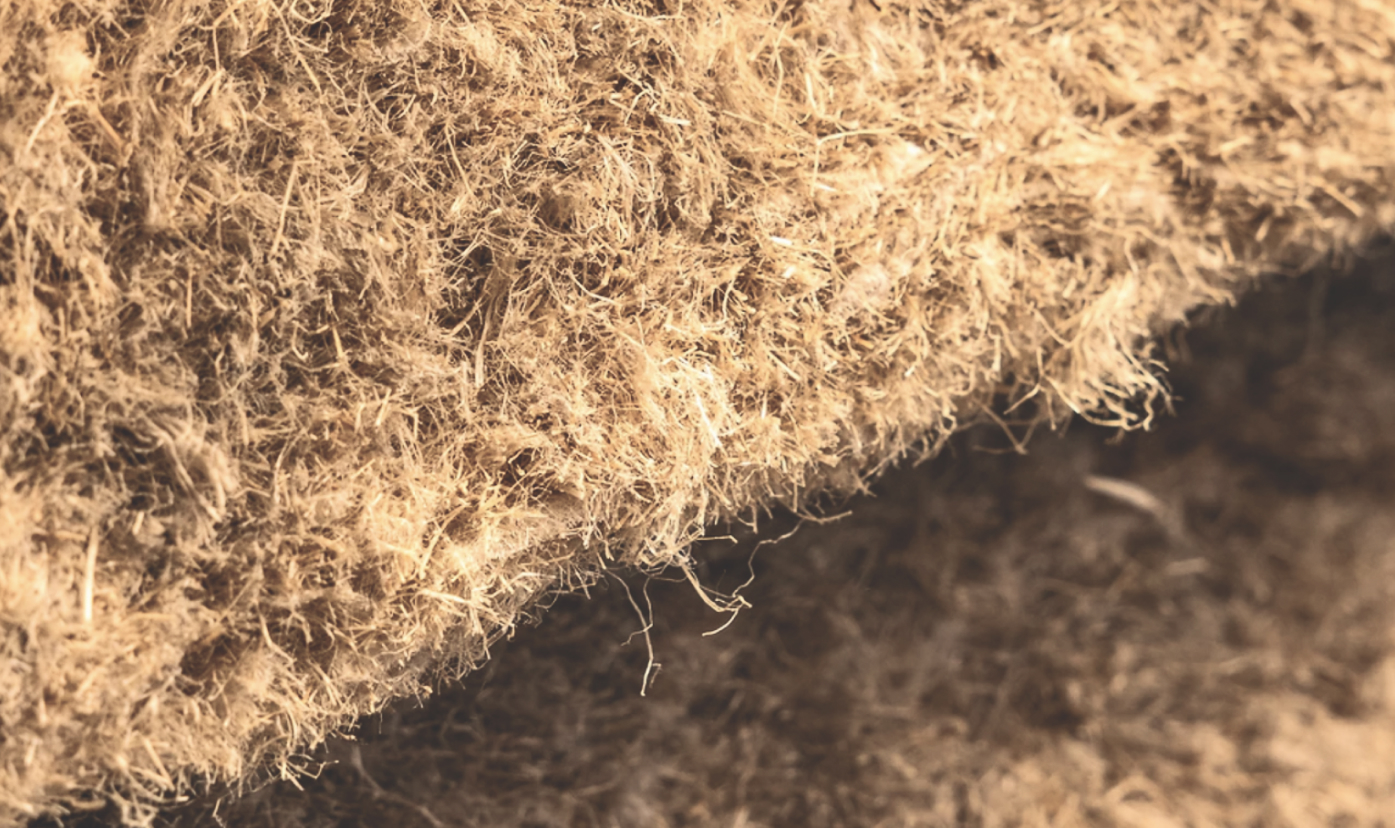As a home builder, you know that the type of insulation you put into a home can have a huge impact on the energy efficiency level, durability, and even the safety of the residents. When it comes to home insulation, each type has its pros and cons.
For example, spray foam insulation, typically made of polyurethane, is known for being one of the most airtight types of insulation out there – if installed perfectly in a continuous and monolithic layer. It should not be considered an air barrier when pursuing more energy efficient homes like Passive House or Net Zero Energy Ready buildings.
Made from either polyurethane or polyisocyanurate, spray foam can seal small gaps and tight areas of home framing, but it isn’t the safest insulative material. In fact, the negatives to using spray foam insulation for homes might outweigh the positives. Discover whether or not you’re better off avoiding this material and opting for a better alternative.
The Downsides of Using Spray Foam Insulation in Homes
1. It Can Lead to Mold
Spray foam insulation mold problems are quite common. Especially with closed-cell spray foam, which is rigid. Mold and mildew can begin growing behind the insulation which can go unnoticed until it’s already become a huge problem. This often happens when the spray foam isn’t installed correctly and space is left between the insulation and the wall, which allows moisture in and gives mold the perfect place to grow, unfettered.
2. It Can Have a Foul Odor
Spray foam insulation is mixed on the job site, and improper ratios of chemicals are common. This creates spray foam with a foul odor that can be unbearable. Some residents have even had to evacuate for months after installation because of the smell of spray foam insulation mixed with a bad ratio. This is one of the most common spray foam insulation problems in attics and wall cavities.
3. It Can Lead to Termite Damage
Another one of the most common attic spray foam insulation problems is termite damage. When spray foam isn’t installed correctly it can hide sills and joists, which can prevent home inspectors from catching termites in these areas.
2. It’s Too Airtight
One of the reasons why people like spray foam is because it fills in the gaps everywhere it’s applied. This, however, can lead to a dangerous level of airtightness in many cases. The more airtight a home is, the better its ventilation system needs to be. Lack of proper ventilation can lead to superheating, carbon monoxide poisoning, and roof damage if spray foam insulation is used in the attic.
We actually want our buildings to be well insulated and as airtight as possible and then use low-energy energy recovery ventilation or passive ventilation (windows). Air leakage through the building envelope causes moisture related issues in the structure and thereby poor indoor air quality. Super airtight buildings with continuous insulation and proper mechanical ventilation have the best indoor air quality of any buildings.

Superior Alternatives to Using Spray Foam Insulation
Cotton denim insulation can help you avoid spray foam insulation moisture problems because it’s much more breathable. Cotton denim is non-toxic and made from industrial scraps of cloth. It’s much more eco-friendly than petroleum-based spray foam insulation and far more resistant to mold and insects as well.

Another way to avoid problems with spray foam insulation in attics and wall cavities is to use cellulose insulation. Cellulose insulation is made up of 75 to 85 percent ground-up recycled paper or recycled denim mixed with boric acid, borax, or ammonium sulfate. Cellulose comes in loose fill, dense pack, and spray varieties. The spray version of cellulose insulation makes a particularly useful alternative because it works similarly to regular spray foam insulation, but is more permeable and easier to remove during inspection. It’s also less efficient at insulating, which is not typically going to be a problem unless you have poor insulation in other areas of the home.
HempWool® is the Best Alternative to Spray Foam
If you’re looking for the number one alternative to spray foam insulation, HempWool® from Hempitecture is the wisest choice. Not only is HempWool® easy to install and non-toxic, it also provides a similar level of energy efficiency as most other types of insulation. The R-value of HempWool® is right around average, which is all a home needs for sufficient insulation.

In addition to hitting that sweet spot in terms of R-value, HempWool® smells great and poses zero risk when it comes to dangerous chemicals and potentially irritative properties that could lead to respiratory issues or allergies for homeowners. It’s also incredibly eco-friendly compared to most other types of insulation and is grown in a matter of months without environmentally harmful chemicals in rural agricultural hubs of America.
Hempitecture HempWool® is a vapor-permeable material which allows moisture to pass through it and evaporate, as opposed to getting stuck in wall cavities and inviting mold and mildew to grow.
This sustainable material is US-grown and US-manufactured, making it readily available with short lead times. Furthermore, HempWool insulation is easy to install and safe to work with, so you don’t have to hire a specialized team or purchase expensive installation tools, compared to spray foam.
If you want the cleanest, most eco-friendly and effective insulation for your homes, contact Hempitecture today to get in touch with an insulation specialist who can answer all of your questions.



